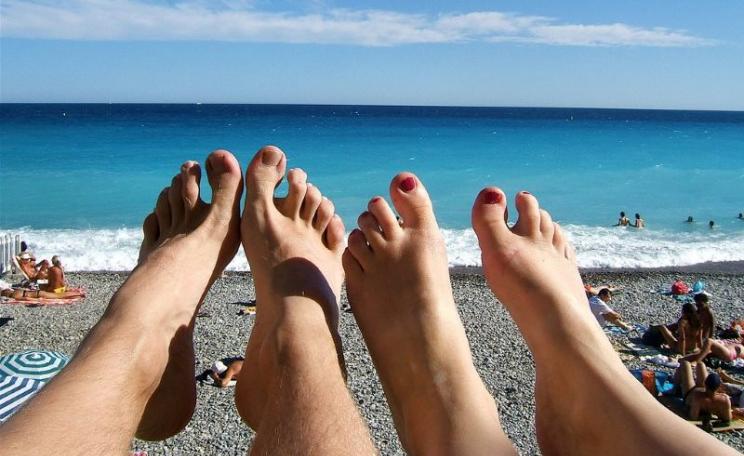Cold winters have become rarer and, on top of this, the remaining severe winters became increasingly ineffective in diminishing wild boar populations because of the increasing frequency of masting years.
Wild boar populations in Europe are getting out of control - and scientists are blaming climate change.
There are now millions of wild boar spreading out from their preferred woodland habitat, moving into city suburbs, and even crossing national boundaries to countries that had thought they were extinct.
In some countries, notably France and Germany, which have always had wild boar populations in their forests, they are a major cause of road accidents.
France has an estimated two million boar, and the German state of Hesse alone has 180,000. Berlin, the German capital, is erecting boar fencing around its borders in an attempt to keep the animals out of the city.
Scientists from the Research Institute for Wildlife Ecology at the University of Veterinary Medicine in Vienna, Austria, report in the journal PLOS ONE that they chose the animal to study because "the wild boar has an enormous reproductive capacity, and thus the potential for remarkable population growth when environmental conditions become more favourable."
Wild boar can have five or more young in a litter, can live as long as 12 years, and females can reach sexual maturity within their first year if there is plenty of food available.
Warmer weather means more nuts and acorns
The scientists believe that the increasingly frequent mild winters in Europe and the extra production of acorns and beechnuts by trees are aiding boar survival rates. Both factors are the result of climate change, they say.
The number of animals has been increasing since the 1980s. Because boars are secretive, nocturnal animals, the scientists had to use hunting records and road accidents to help count the animals in 12 European countries.
"Doing this, we were able to depict the growth of the wild boar population", says the report's lead author, Sebastian Vetter, an evolutionary biologist. "As mild winters are becoming more frequent, boar populations are also growing exponentially."
Climate change is also having a direct effect on food supply, the authors say, with the increasing frequency of 'mast years' - years when trees produce huge quantities of acorns and nuts - also aiding the animals' survival. They attribute the phenomenon to warming climate.
In severe winters, a large number of young from the previous summer used to die of cold and hunger, but the extra food supply available, even in cold spells, is enabling more to survive.
Cold winters have become rarer and, on top of this, the remaining severe winters became increasingly ineffective in diminishing wild boar populations because of the increasing frequency of masting years.
"Our analysis showed that the frequency of beech masting years has increased over the last decades, presumably due to climate change. This finding, together with the fact that cold winters had no negative effect on population growth when food resources were abundant, shows that the effect of climate change on population growth of wild boar is two-fold:
"Cold winters have become rarer and, on top of this, the remaining severe winters became increasingly ineffective in diminishing wild boar populations because of the increasing frequency of masting years. In such years, beech or oak trees produce vast amounts of energy rich seeds that are available from autumn until spring in the following year.
"If abundant, this food source likely enables juveniles to cope even with high thermoregulatory costs in a severe winter, and adults to accumulate high amounts of body energy reserves for reproduction in the following year. This result also indicates that low survival in cold winters is apparently not caused by a limited thermogenic capacity.
"Instead, increased winter mortality seems to be caused by a negative energy balance, i.e., when high thermoregulatory costs, due to severe cold, cannot be matched by the available food, especially when high caloric seeds are absent."
From Italy to Sweden, populations surge
Wild boars are one of the most widely distributed of animals, with their numbers varying between northern and southern latitudes. However, the survival rate of boar populations in Europe seems to be increasing across all countries.
One of the reasons for the wider spread of boar populations has been the fashion for their meat. Wild boar farms have been established in countries where the species had long ago been hunted to extinction. But farmers, unfamiliar with the animals, were not prepared for their ability to break down or jump fences as high as two metres, and many boars escaped into the wild.
Sweden, for example, had no wild boar 10 years ago, but now has an estimated 150,000 in its forests. The UK also has a small but well-entrenched boar population for the first time in 500 years.
Italy, well to the south, has always had wild boar, but has also seen a huge growth in their numbers. There are now estimated to be between 600,000 and 1 million animals. Some are seen on the outskirts of Rome, Genoa and Naples, where they eat from dustbins.
The paper: 'What Is a Mild Winter? Regional Differences in Within-Species Responses to Climate Change' by Sebastian G. Vetter, Thomas Ruf, Claudia Bieber, Walter Arnold is published in PLOS One.
Paul Brown writes for Climate News Network.







